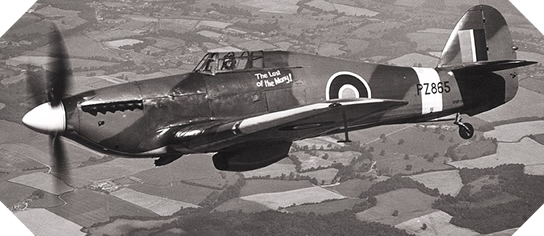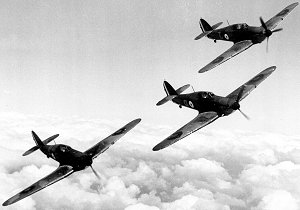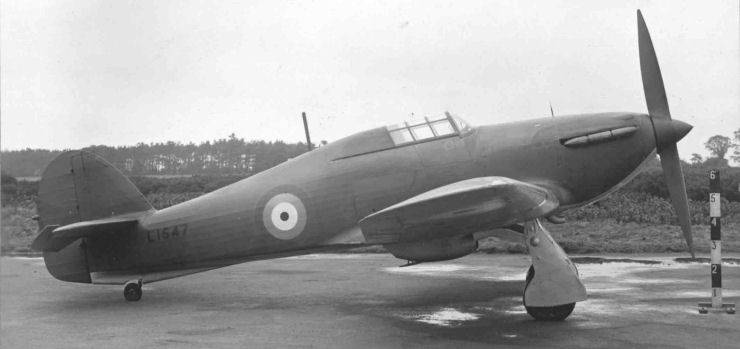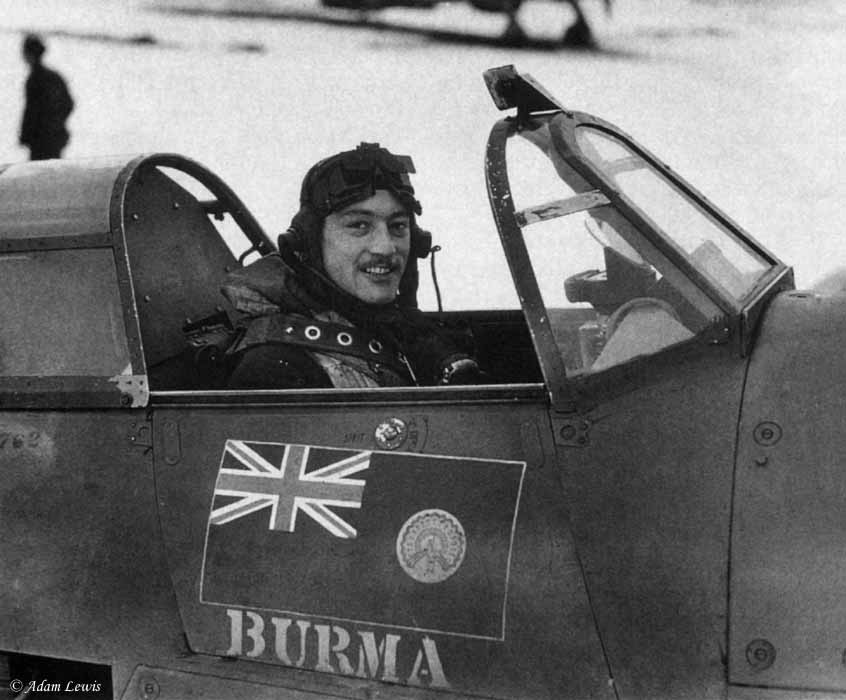Xenophon
Gone and forgotten
The Hurricane took Britain's fighter force belatedly out of the bi-plane era and gave the RAF a machine with which to combat the fast growing might of the German Luftwaffe. The year 1937 was a key time in fighter development on both sides of the channel. In Germany the Messerschmidt Bf-109B, armed with three 7.9mm machine guns or 2 machine guns and one 20mm cannon entered service, and soon proved its worth in the Spanish Civil War. By contrast, the British had the ponderous Gloster Gladiator, a bi-plane. But two new British types were on the way, and by the eve of the Battle of Britain, the RAF's front line fighter strength of 1,200 included 800 Hurricane monoplane single seat fighters, armed with 8 .30s inch caliber machine guns.
The Hurricane was born in the fertile mind of Sidney Cam, the talented designer of the Hawker aircraft firm. The RAF wanted a monoplane with a retractable undercarriage, closed cockpit, single wing plane that could exceed 300mph. Cam went right to work. Drawing on Hawker's experience in fabric covered bi-planes, he decided the new plane would be a steel framed, covered in fabric, so to save wieght and improve speed. The first proto-type flew in November of 1935, and proved at that point to be the most advanced fighter design in the world. It exceeded the specification of 300mph, and was armed with 8 machine guns, giving it 4 times the fire-power of the 2 gunned bi-planes the RAF and Luftwaffe were then using.
The plane proved to be a joy to fly, it's spread undercarriage made it much safer to land then the faster Spitfire design, and it's fabric wings and fuselage were easily repaired from battle damage, another advantage over the Spitfire. It was also an extremely stable gun platform, suffering little vibration at speed or in defection shooting.
When the war broke out, only Hurricanes were allotted to the advanced air strike force in France, and they acquitted themselves well against the faster Bf-109E, and proved deadly vs the Bf-110 and all German bombers.When France fell, two out every three squadrons in Britain were equipped with Hurricane, and they shouldered the major load in the Battle of Britain. british tactics were from the more effective Spitfires to engage the German fighters, and the Hurricanes to take on the bombers. Of course, the Hurricanes were often called on to fight the fighters as well, and ablely held their own.
In late 1940 a new version of Hurricane with 12 machine guns was introduced, called the Mk IIB. The MkIIC replaced the machine guns with four 20mm Cannons, and this version entered service in 1941, and were the most heavily armed fighters in the world at that time. A special ground attack version was developed in 1942, which placed two 40mm cannons in pods under the wings (and was later copied by the Germans, on their Stuka Tank Busters). Later, .5 inch rockets were carried underwing for added firepower. A Special catapult version for convoy protection was devised, which was basically a one shot fighter, the plane would be launched, engage the enemy, and land in the sea, a wasteful stop-gap called a cam-ship combination. Hurricanes were also given arrester gear and used on aircraft carries. The type was produced until 1944, when it was realized it could not be up-rated any further.
It ended up being the most produced fighter in the British inventory during its operational life, over 14,000 of them completed, and was a truly classic war bird.
MKI
Length: 31 ft 4ins
Span: 40ft 0ins
Crew: one
Top Speed: 328 mph
Ceiling: 34,200 ft
Range: 505 miles
Armament: 8x .303 Caliber Browning Machine Guns
MKIIB:
Length:32 ft 3ins
Span: 40ft 0ins
Combat weight: 8,250 lb
Crew: one
Top Speed: 339 mph
Ceiling: 36,000 ft
Range: 470 miles
Armament: 12x .303 Caliber Browning Machine Guns
The Hurricane was born in the fertile mind of Sidney Cam, the talented designer of the Hawker aircraft firm. The RAF wanted a monoplane with a retractable undercarriage, closed cockpit, single wing plane that could exceed 300mph. Cam went right to work. Drawing on Hawker's experience in fabric covered bi-planes, he decided the new plane would be a steel framed, covered in fabric, so to save wieght and improve speed. The first proto-type flew in November of 1935, and proved at that point to be the most advanced fighter design in the world. It exceeded the specification of 300mph, and was armed with 8 machine guns, giving it 4 times the fire-power of the 2 gunned bi-planes the RAF and Luftwaffe were then using.
The plane proved to be a joy to fly, it's spread undercarriage made it much safer to land then the faster Spitfire design, and it's fabric wings and fuselage were easily repaired from battle damage, another advantage over the Spitfire. It was also an extremely stable gun platform, suffering little vibration at speed or in defection shooting.
When the war broke out, only Hurricanes were allotted to the advanced air strike force in France, and they acquitted themselves well against the faster Bf-109E, and proved deadly vs the Bf-110 and all German bombers.When France fell, two out every three squadrons in Britain were equipped with Hurricane, and they shouldered the major load in the Battle of Britain. british tactics were from the more effective Spitfires to engage the German fighters, and the Hurricanes to take on the bombers. Of course, the Hurricanes were often called on to fight the fighters as well, and ablely held their own.
In late 1940 a new version of Hurricane with 12 machine guns was introduced, called the Mk IIB. The MkIIC replaced the machine guns with four 20mm Cannons, and this version entered service in 1941, and were the most heavily armed fighters in the world at that time. A special ground attack version was developed in 1942, which placed two 40mm cannons in pods under the wings (and was later copied by the Germans, on their Stuka Tank Busters). Later, .5 inch rockets were carried underwing for added firepower. A Special catapult version for convoy protection was devised, which was basically a one shot fighter, the plane would be launched, engage the enemy, and land in the sea, a wasteful stop-gap called a cam-ship combination. Hurricanes were also given arrester gear and used on aircraft carries. The type was produced until 1944, when it was realized it could not be up-rated any further.
It ended up being the most produced fighter in the British inventory during its operational life, over 14,000 of them completed, and was a truly classic war bird.
MKI
Length: 31 ft 4ins
Span: 40ft 0ins
Crew: one
Top Speed: 328 mph
Ceiling: 34,200 ft
Range: 505 miles
Armament: 8x .303 Caliber Browning Machine Guns
MKIIB:
Length:32 ft 3ins
Span: 40ft 0ins
Combat weight: 8,250 lb
Crew: one
Top Speed: 339 mph
Ceiling: 36,000 ft
Range: 470 miles
Armament: 12x .303 Caliber Browning Machine Guns









